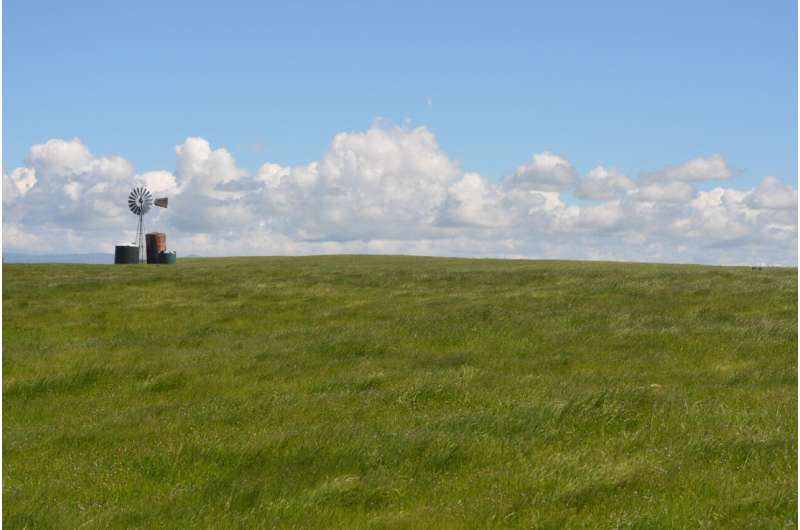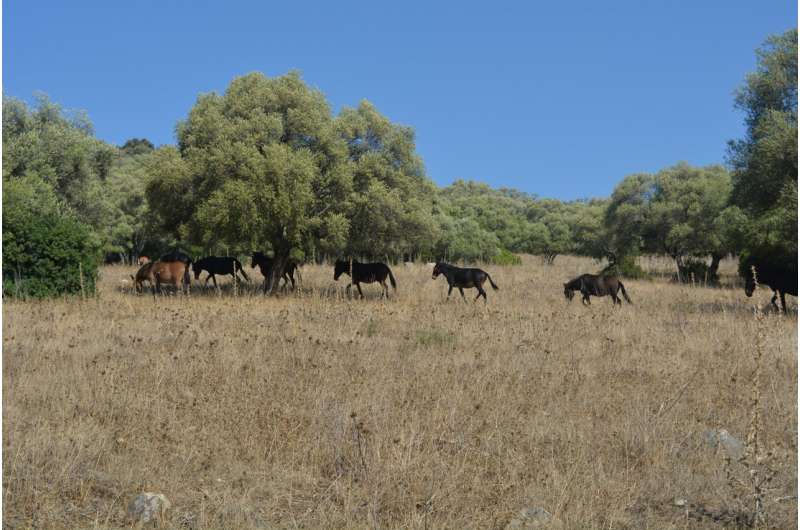This article has been reviewed according to Science X's editorial process and policies. Editors have highlighted the following attributes while ensuring the content's credibility:
fact-checked
peer-reviewed publication
trusted source
proofread
Can we predict if a plant species will become exotic?

Plant species become exotic after being accidentally or deliberately transported by humans to a new region outside their native range, where they establish self-perpetuating populations that quickly reproduce and spread. This is a complex process mediated by many factors, such as plant traits and genetics, which challenges the creation of general guidelines to predict or manage plant invasions.
Scientists from Spanish and Australian institutions have now defined a new framework to find the predictors of invasiveness, investigating species that have succeeded or failed to establish abroad after following similar historical introduction routes.
Dr. Javier Galán Díaz, University of Seville, Spain, Dr. Enrique G. de la Riva, University of León, Spain, Dr. Irene Martín-Forés, The University of Adelaide, Australia, and Dr. Montserrat Vilà, Doñana Biological Station (EBD-CSIC), Spain, described their findings in a new paper in NeoBiota.
"While current policies exert strong control on the import and export of living organisms, including pests, across countries, until only a few decades ago, very little attention was paid to this issue. This means that many species were translocated to new regions without any consideration of their potential impacts," says Dr. Javier Galán Díaz.
An example of this is the massive plant exchange among Mediterranean‐type regions as a consequence of European colonialism: crops and cattle were exported, along with tools and materials, potentially bringing along the seeds of many plant species.
"So far, most studies on plant invasions have tried to explain the success of exotic species by comparing their traits with those of the native plant communities where they arrive, or by comparing the traits of plant species that have achieved different levels of invasion in the same region. But, if we take into account that the most common plant species from European agricultural landscapes have been in contact with humans and have therefore had the potential to be inadvertently transported to other Mediterranean regions, then only those that have successfully invaded other regions have something different in them that allowed them to establish and spread abroad," Dr. Galán Díaz explains.

Following this approach, the scientists found that, when comparing plant species transported from the Mediterranean Basin to other Mediterranean-climate regions (California, Central Chile, the Cape Region of South Africa and Southwestern and South Australia) in the search of predictors of invasiveness, only those species with large distribution ranges that occupy climatically diverse habitats in their native region became exotic.
Also, species with many dispersal vectors (for instance those that have seeds dispersed by animals, water or wind), long bloom periods and acquisitive above- and belowground strategies of resource use are most likely to become exotic. Most of this plant information is readily available or easy to obtain from free and open-access repositories.
"Determining the factors that pre-adapt plant species to successfully establish and spread outside of their native ranges constitutes a powerful approach with great potential for management," the researchers write in their paper. "This framework has the potential to improve prediction models and management practices to prevent the harmful impacts from species in invaded communities."
"Using the existing information, we can identify the key species to monitor. This is especially encouraging in the era of Big Data, where observations from citizen science applications add to those of scientists, increasing the potential of screening systems," Dr. Galán Díaz says in conclusion.
More information: Javier Galán Díaz et al, Which features at home make a plant prone to become invasive?, NeoBiota (2023). DOI: 10.3897/neobiota.86.104039
Journal information: NeoBiota
Provided by Pensoft Publishers


















